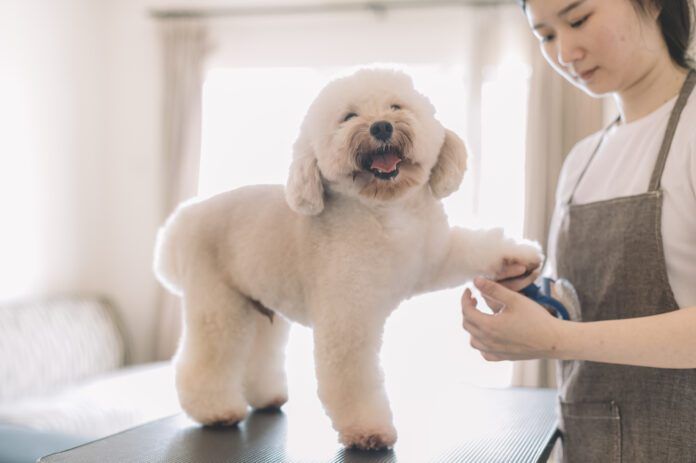In some cases, a dog may need to be sedated for grooming. For example, if you have a new rescue dog who is badly matted, sedation may be the kindest way to get him shaved and nails trimmed. Beyond that, though, some questions need to be asked and training seriously considered before allowing sedation.
Acepromazine for Dogs
Acepromazine is a commonly used drug for dog sedation, but it is not a good choice. It has no effect on pain and does not reduce anxiety—all it does is keep your dog somewhat immobile—not the best way to get a dog accustomed to being groomed. Acepromazine is also on the list of drugs to use with extreme caution in dogs with the MDR1 genetic defect.
Acepromazine can lower blood pressure and interacts with a variety of gastrointestinal medications and flea and tick treatments. Acepromazine is not reversible, and some dogs take a long time to completely come out of its sedative influence.
Veterinarians are more likely to reach for trazodone, which is a human medication used for depression. It also has some interactions and side effects, of course, but your veterinarian will guide you. If your dog truly needs full sedation for grooming, you need to find a safe option.
OTC Dog Sedative for Grooming
If your dog doesn’t really need full sedation but just the excitable “edge” taken off, you might want to try some over-the-counter options. Many herbal and oil combos can mellow a dog, such as Canine Calm, which is an essential oil mix that can help your dog to view grooming more positively.
Hemp bites and chews may help your dog through the stress of grooming, but before you buy any, ask your veterinarian for reputable sources as some brands are not consistent from batch to batch.
Dog pheromones help settle some dogs. Try an Adaptil collar, bandana with spray, or find out if they have a diffuser in the grooming salon.
With any of these OTC options, you need to experiment to see how long it takes your dog to respond to the products. Not all dogs are affected the same way.
Skip Sedation for Nail Trimming
Nail trimming is over so quickly that sedating your dog is basically overkill. The OTC options may work, but the best way to handle nail trimming for a phobic dog is to use time, patience, and baby steps.
First, handle your dog’s toes and feet while providing treats until he doesn’t pay any attention to that. You can add in snapping the clippers so your dog can hear them, also while feeding a couple of great treats. You may need to repeat this for several days before moving beyond this step.
Once he seems to think “treat” instead of “scary noise,” gradually bring the clippers closer until you can clip a small portion of one nail. You may end up trimming one nail a day eventually, but that is still progress.
Some dogs are OK for a regular nail clipper and others prefer a Dremel nail grinding tool. (Careful! Don’t care tangled up in them!) Experiment to see what’s best for your dog.
Don’t dismiss the idea of a muzzle. If your dog has been trained to accept a muzzle, many dogs calm down as soon as it is put on. Again, this requires effort by you ahead of time.
Choose Your Groomer Wisely
Find a groomer willing to work with you and your timid dog, but you should also be prepared to pay extra. Schedule your dog when he is the only one at the salon. Less activity means less stress. Only do as much as your dog is ready to handle, so you may need a bunch of 15-minute appointments. Your dog might be better with you there to hold his paw, or he might be better behaved and less stressed if you’re not there. This is especially true if YOU are stressed.






